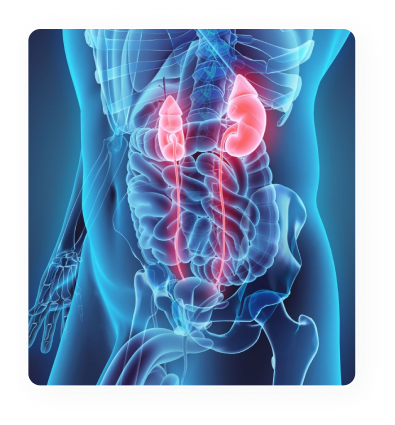Access Site And Care
Apart from the providing as safe and comfortable treatment environment, it is assuring for any patient that the medical management and staff are knowledgeable but possess the requisite experience in providing top quality care to all patients.
Health Solutions prides itself on having a management and nursing team with over 100 years of combined work experience in nephrology, kidney transplant, general surgery and dialysis nursing that provides tremendous comfort to the overall patient experience at our facility.
Fistula, Graft And Catheter Access Sites
Fistula (Vascular) Access:
Through a surgical procedure, an AV fistula connects your artery directly to a vein, typically in the forearm. Connecting the artery to the vein causes more blood to flow into the vein. As a result, the vein grows larger and stronger, making repeated needle insertions for hemodialysis treatments easier. This method is often ideal because your own tissue is used, decreasing the chance of infection and clotting. Keep in mind, when a fistula access is created you will need to give it time to “mature” for use approximately 8 – 10 weeks. To develop your new fistula, be sure to exercise your access arm by squeezing a foam ball or using hand grips as directed. This helps the fistula develop properly.
Arteriovenous Graft (Vascular) Access:
Another option is to implant a synthetic tube, or graft, to connect your artery and vein under the skin in your arm. The graft becomes an artificial vein that can be used repeatedly for needle placement and blood access during hemodialysis. A well-cared-for graft can last several years and maturation is not required.
Fistula and Graft Care: ?
- Thoroughly clean your fistula before each dialysis session.
- Touch your fistula every day to feel the rhythm of your blood flow called “thrill” (vibration). The “thrill” tells you that the blood is flowing through your access as it should be. If you do not feel the “thrill,” you should call your dialysis unit as this could signal a clot.
- Your access site is only to be used for dialysis treatments.
- Do not allow blood to be drawn from the access.
- Do not let anyone put a blood pressure cuff on your access arm.
- Be careful not to bump or cut your access.
- Do not scratch your access site as the scratching can increase the risk for infection if the surface of the skin is broken.
- Do not wear jewellery or tight clothes over your access site.
- Do not sleep with your access arm under your head or body.
- Do not lift heavy objects, carry children, or put pressure on your access arm
- Report any areas of your graft or fistula that appear to be protruding or ballooning out. This is called an aneurysm. The skin over an aneurysm may look thin and shiny.
- Check your access point every day for signs of infection. These can include swelling, tenderness, or redness. If you experience any of these symptoms, contact your doctor.

Catheter Access:
If your kidney disease has progressed quickly, you may not have time to get a permanent vascular access before hemodialysis has to be initiated. A decision is then made to create a tunnelled catheter access site. The catheter is a long Y-shaped tube which the tip can be placed in your neck, chest or groin and is connected to a central vein. The other end of the tubing exits your skin and is attached to the tubing on the dialysis machine. Once the catheter is inserted it can be used immediately for dialysis. This choice of access is only used as a last resort as most catheters have a high infection rate and clot more frequently.
Catheter Care: ?
- Do keep the catheter area clean and dry
- Do not pinch, poke, bend or pull the catheter
- Do not use sharp objects, such as scissors around the catheter
- Do not open your catheter. The end caps of your catheter MUST be kept tightly closed. Only your dialysis nurse or physician should remove the caps or clamps.
- Do not get the catheter wet in the shower. Avoid getting the waterproof dressing wet.
- Ensure you do not go in the sea or a swimming pool
- Contact the unit if you develop a high temperature, chills, shivering or sweating.
- Contact the unit if you have any pain, redness or swelling around the exit site of the line.
- Contact the unit if you notice any bleeding from the catheter site.
- Any medical staff who touches the catheter site must undertake strict procedures to prevent infection. Ensure the dressing is not touched by anyone other than medical personnel who are familiar with using sterile technique.

© 2025 HEALTH SOLUTIONS INC. ALL RIGHTS RESERVED.
